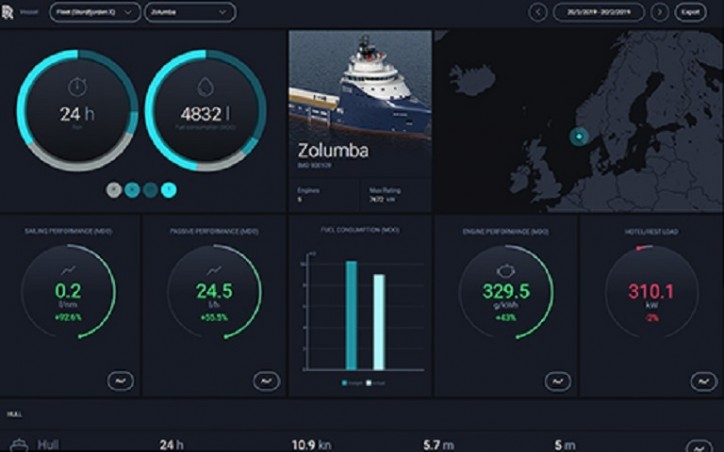Rolls-Royce Commercial Marine has been awarded a contract to install its next-generation Energy Management System across nine vessels in the Havila Shipping fleet: four anchor handling tug supply (AHTS) ships, four platform supply vessels (PSV) and one rescue and recovery vessel (RRV).

The Energy Management System (EMS) was first introduced in November 2017 by Rolls-Royce, as part of a suite of vessel Intelligent Asset Management (IAM) products, and has since then been installed on over 50 vessels.
Kristian Kleiveland, Rolls-Royce Sales Manager – Ship Intelligence, said: “Having looked at a number of different options, Havila selected the Rolls-Royce EMS because of its ease-of-use and proven ability to optimise vessel operations. This was a key specification as the shipowner required a system that simplified the tracking of its vessels’ fuel consumption while not adding to the already high workload for its personnel.”
A key benefit of the EMS is that a ship’s crew can see in real-time the effect that running machinery has on fuel consumption in order to make the necessary operational changes to reduce the fuel requirement.
The system’s sensors assess fuel consumption against, amongst other things, vessel speed, electrical load and the relationship between propeller pitch and RPM. Existing dynamic positioning (DP) sensors are also used to calculate the external forces – wind speed and wave force – acting on the vessel. It also shows how the vessel’s operational parameters are influencing fuel consumption.
The data collected from the sensors is then available onboard and is securely encrypted and processed. The required reporting data is transmitted via link on to a secure Rolls-Royce-hosted web portal, where more detailed historical analysis and comparisons can be carried out.
“All the data can be accessed by ship management teams shoreside, so they can see what changes were made and how they directly affected fuel consumption. Ship managers can also use the information to compare the performance of different crews and all the vessels in a fleet,” said Kleiveland.
Olav Haug Vikebakk, Deputy Managing Director, Havila Shipping ASA, said: “For us, a key requirement was to find a crew-friendly solution to reducing fuel consumption. Our vessels operate various Rolls-Royce propulsion and machinery systems, so its Energy Management System is a perfect fit for us.
“It is very simple to use and understand. The tool allows us to implement operational changes in real-time to immediately reduce fuel consumption and reduce unnecessary running hours on equipment like generators. This has a positive effect not only on our operations from an environmental perspective, but also on the bottom line.”
Marco Camporeale, General Manager Intelligent Asset Management Solutions, Rolls-Royce, said: “We are seeing a general trend in shipowners using operational data to show charterers and other stakeholders what they are doing to reduce the impact of ship operations on the marine environment. The Rolls-Royce EMS allows all parties to more fully understand the performance of their vessels. The technology is applicable to any vessel-type operating equipment from any manufacturer.”
While it is too early to evaluate the operational and performance data for the first Havila ship, Rolls-Royce has EMS customers reporting annual fuel savings of up to 20%. The installations on Havila’s fleet are scheduled to be up and running, reporting fuel consumption trends, by 1 March 2019.
Source: Rolls-Royce